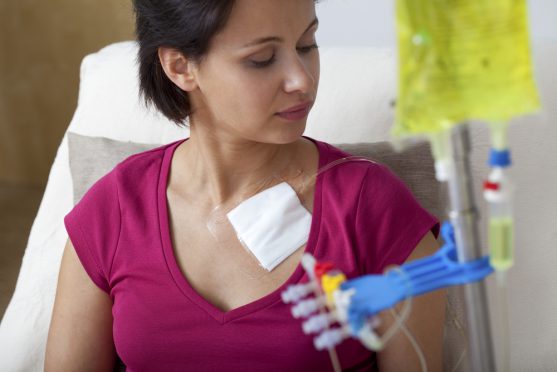This article has been written by Dr Rajeev Kumar, Senior Consultant and Chief of Breast Services, Rajiv Gandhi Cancer Institute, New Delhi.
A diagnosis of breast cancer puts the entire family in a state of stress and anxiety. Now the entire family is focused on how to get the disease treated quickly and effectively, so that things can go back to normal again. This is the case with most newly diagnosed cases where they want to get treated fast and are unwilling to invest the time required to understand how treatments can be personalized to suit the exact needs of a breast cancer patient.

To better understand personalization of treatments, one needs to first understand the different stages in which breast cancer is diagnosed, based on which treatment is typically planned.
After diagnosis, surgery is done to remove the tumour from the body. In a few instances where the tumour is quite big, chemotherapy is offered before the surgery, to reduce the size of the tumour. In other instances, chemotherapy is given once the surgery is over.
Cycles of radiation are planned, in some cases, followed by an extended course of hormone therapy, if the patient is hormone-receptor positive. These are the basic treatment protocols which have been put in place for the treatment of breast cancer patients.
When personalization kicks in, there are specific questions which get asked based on a few parameters like the age of the patient, the size of the tumor etc. All these parameters determine the treatment protocol suitable for a specific patient.
This level of personalization helps avoid over-treatment at various levels like type of surgery, whether to administer chemotherapy or not, etc in breast cancer.
For example, if the size of the tumour is small, the patient can choose to get only a part of the breast removed (lumpectomy), rather than having the complete breast removed (mastectomy). This kind of breast conservation surgery helps the patient get back to feeling normal after a simpler reconstructive surgery is performed.
Routine IHC testing is done either on a biopsy sample or a surgical sample (post-surgery) to check the hormone receptor and HER2 status of the patient. In cases where the patient is HER2-positive or triple negative, chemotherapy is the next leg of treatment which could be offered.
In case the patient is hormone receptor-positive and HER2-negative, and if the disease has been detected in the early stages, with small tumors, and if the cancer cells have not extended to lymph nodes, the patient may or may not require chemotherapy.
The downside of chemotherapy is the side effects that it produces in the patients. The reason chemotherapy is administered is to kill any cancer cells that may have remained behind after surgery. Chemotherapy is not able to differentiate a cancer cell from a healthy growing normal cell and starts damaging those too. This adversely impacts the patient with side effects like hair loss, damage to the reproductive & digestive systems, with instances of nausea and vomiting.
There are also innumerable studies which have suggested that just 15% to 20% of hormone positive and HER2-negative patients actually benefit from chemotherapy while the rest do well without chemotherapy. However, administering chemotherapy to all patients of this category of breast cancer is subjecting them to over-treatment.
Thus, this clearly indicates that only specific patients need chemotherapy while others do not. This warrants personalization of the treatment, and the next big question to ask is who needs chemotherapy and how to identify her.
The advancements in science have presented to us an opportunity to get clear answers to this question, and to avoid any kind of trial and error while administering treatment. There are tests called prognostic tests which help us understand if a particular patient is low risk or high risk for cancer recurrence.
Low risk patients can avoid chemotherapy thus avoiding the side effects that it causes. Only high risk patients need chemotherapy.
Today, in India, we have tests like CanAssist Breast, Oncotype Dx, MammaPrint, Prosigna, EndoPredict,to identify patients who can benefit from chemotherapy, for the prevention of recurrence. This is a big win in the treatment journey of a breast cancer patient as it improves the treatment experience and helps improve the overall quality of life.

